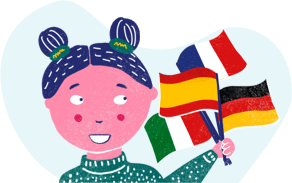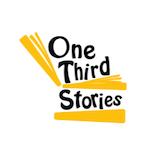
Easy Ways to Review Family Vocabulary Words in a New Language
Introducing children to a new language can be an exciting journey, especially when it involves their daily lives and relationships. One of the most effective ways to help children understand and retain new vocabulary is to connect language learning to their everyday experiences. Learning words related to family members is a great place to start, as it ties into their familiar relationships and environments.
If you’ve already joined the One Third Stories family, we think this would be a great follow-up to The Watery Tale of Wilma the Whale. If you haven’t joined us yet, you can find a free family word activity and audio file for pronunciation at the end of this post! Here are some easy and engaging ways to review family vocabulary words with children.
Why Connecting Language Learning to Everyday Life Matters
Research shows that children learn best when new information is relevant to their lives and experiences. When language learning is linked to daily activities and relationships, it becomes more meaningful and memorable. Children are more likely to retain vocabulary when they see its practical use in their everyday interactions. This contextual learning helps them understand not just the words themselves but also how to use them in real-life situations.
Fun and Easy Ways to Review Family Vocabulary
1. Photo Albums and Digital Photos:
- For Younger Children: Allow your child to scroll through photo albums or digital photos on a camera or device. As they point to each family member, have them identify the person using the vocabulary in the new language.
- For Older Children: Insert photos into a Word or Google document. Have your child label each person in the images with the appropriate family terms in the new language.
2. Magazines and Catalogs:
- Use magazines or catalogs to find images of people. Have your child point to different individuals and identify them with family vocabulary words in the new language.
- Children can also cut out images from magazines and catalogs to create collages. Discuss the family words as they point to each person, or have older children label the images.
3. Storytelling with Images:
- As children learn new vocabulary, encourage them to create oral or written stories about the people in the images. They can use as many family-related vocabulary words in the new language as they can.
- This activity not only reinforces vocabulary but also helps with sentence structure and creative thinking.
Step-by-Step Instructions for Each Activity
1. Using Photo Albums and Digital Photos:
- Gather a variety of family photos.
- For younger children: Sit together and scroll through the photos. Ask questions like, “Who is this?” and encourage your child to respond in the new language.
- For older children: Use a computer to insert photos into a document. Let your child type the names of family members in the new language below each photo.
2. Using Magazines and Catalogs:
- Collect a few magazines or catalogs with a lot of pictures of people.
- Look through the magazines with your child and point to different people, asking them to identify each one using family vocabulary in the new language.
- Have your child cut out pictures of people and glue them onto a piece of paper to create a collage. As they work, discuss who each person might be in a family setting.
3. Creating Stories with Images:
- After labeling or discussing the images, encourage your child to tell a story about the people in the pictures.
- Start with simple prompts like, “Tell me about this family,” or “What are they doing?”
- Gradually introduce more complex prompts as your child becomes more comfortable with the vocabulary.
Importance of Making Learning Fun and Relevant
Children are naturally curious and enjoy learning when it feels like play. By incorporating family vocabulary into fun activities, you make the learning process enjoyable and relevant. This approach helps children see the practical use of the new language in their everyday lives, which boosts their motivation and engagement.
Conclusion
Reviewing family vocabulary words in a new language can be a delightful and enriching experience for children. By using photo albums, digital photos, magazines, and storytelling, you can create meaningful connections between the new language and your child’s daily life. These activities not only help with vocabulary retention but also strengthen family bonds as you explore and learn together. Happy learning!



Choose a language
One Third Stories courses are available in French, Spanish, Italian and German.
Select a subscription
Choose between monthly or annual payment options.
Start learning
Receive your first audiobook and Story Box, and let the learning begin!.

Choose a language
Our courses are available in French, Spanish, Italian and German.

Select a subscription
Choose between monthly or annual payment options.

Start learning
Receive your first audiobook and Story Box, and let the learning begin!.







